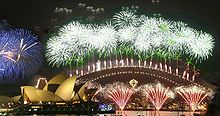Cross posted from The Stars Hollow Gazette
This is your morning Open Thread. Pour your favorite beverage and review the past and comment on the future.
Find the past “On This Day in History” here.
January 11 is the 11th day of the year in the Gregorian calendar. There are 354 days remaining until the end of the year (355 in leap years).
On January 11, 1908, U.S. President Theodore Roosevelt declares the massive Grand Canyon in northwestern Arizona a national monument.
Though Native Americans lived in the area as early as the 13th century, the first European sighting of the canyon wasn’t until 1540, by members of an expedition headed by the Spanish explorer Francisco Vasquez de Coronado. Because of its remote and inaccessible location, several centuries passed before North American settlers really explored the canyon. In 1869, geologist John Wesley Powell led a group of 10 men in the first difficult journey down the rapids of the Colorado River and along the length of the 277-mile gorge in four rowboats.
By the end of the 19th century, the Grand Canyon was attracting thousands of tourists each year. One famous visitor was President Theodore Roosevelt, a New Yorker with a particular affection for the American West. After becoming president in 1901 after the assassination of President William McKinley, Roosevelt made environmental conservation a major part of his presidency. After establishing the National Wildlife Refuge to protect the country’s animals, fish and birds, Roosevelt turned his attention to federal regulation of public lands. Though a region could be given national park status–indicating that all private development on that land was illegal–only by an act of Congress, Roosevelt cut down on red tape by beginning a new presidential practice of granting a similar “national monument” designation to some of the West’s greatest treasures.
Grand Canyon National Park became a national park in 1919. So famous is this landmark to modern Americans that it seems surprising that it took more than thirty years for it to become a national park. President Theodore Roosevelt visited the rim in 1903 and exclaimed: “The Grand Canyon fills me with awe. It is beyond comparison–beyond description; absolutely unparalleled throughout the wide world …. Let this great wonder of nature remain as it now is. Do nothing to mar its grandeur, sublimity and loveliness. You cannot improve on it. But what you can do is to keep it for your children, your children’s children, and all who come after you, as the one great sight which every American should see.”
Despite Roosevelt’s enthusiasm and his strong interest in preserving land for public use, the Grand Canyon was not immediately designated as a national park. The first bill to create Grand Canyon National Park had been introduced in 1882 and again in 1883 and 1886 by Senator Benjamin Harrison. As President, Harrison established the Grand Canyon Forest Reserve in 1893. Theodore Roosevelt created the Grand Canyon Game Preserve by proclamation in 1906 and Grand Canyon National Monument in 1908. Senate bills to establish a national park were introduced and defeated in 1910 and 1911; the Grand Canyon National Park Act was finally signed by President Woodrow Wilson in 1919. The National Park Service, which had been established in 1916, assumed administration of the park.
The creation of the park was an early success of the environmental conservation movement; its National Park status may have helped thwart proposals to dam the Colorado River within its boundaries. (Lack of this fame may have enabled Glen Canyon Dam to be built upriver, flooding Glen Canyon and creating Lake Powell.) In 1975, the former Marble Canyon National Monument, which followed the Colorado River northeast from the Grand Canyon to Lee’s Ferry, was made part of Grand Canyon National Park. In 1979, UNESCO declared it as a World Heritage Site.
The Grand Canyon itself, including its extensive system of tributary canyons, is valued for the combination of large size, depth, and the exposed layering of colorful rocks dating back to Precambrian times. It was created through the incision of the Colorado River and its tributaries after the Colorado Plateau was uplifted and the Colorado River system developed along its present path.

 On this day in 1901,
On this day in 1901, 

 On this day in 1877, Crazy Horse and his warriors–outnumbered, low on ammunition and forced to use outdated weapons to defend themselves–fight their final losing battle against the U.S. Cavalry in Montana.
On this day in 1877, Crazy Horse and his warriors–outnumbered, low on ammunition and forced to use outdated weapons to defend themselves–fight their final losing battle against the U.S. Cavalry in Montana. On this day in 1789,
On this day in 1789,  Samuel Finley Breese Morse was born April 27, 1791, in Charlestown, Massachusetts. He attended Yale University, where he was interested in art, as well as electricity, still in its infancy at the time. After college, Morse became a painter. In 1832, while sailing home from Europe, he heard about the newly discovered electromagnet and came up with an idea for an electric telegraph. He had no idea that other inventors were already at work on the concept.
Samuel Finley Breese Morse was born April 27, 1791, in Charlestown, Massachusetts. He attended Yale University, where he was interested in art, as well as electricity, still in its infancy at the time. After college, Morse became a painter. In 1832, while sailing home from Europe, he heard about the newly discovered electromagnet and came up with an idea for an electric telegraph. He had no idea that other inventors were already at work on the concept.
 Before the bridge was built, the only practical short route between San Francisco and what is now Marin County was by boat across a section of San Francisco Bay.
Before the bridge was built, the only practical short route between San Francisco and what is now Marin County was by boat across a section of San Francisco Bay.  On this day in 1938, The
On this day in 1938, The  On this day in 1962,
On this day in 1962, 
 Probably observed on March 1 in the old Roman Calendar, The World Book Encyclopedia of 1984, volume 14, page 237 states: “The Roman ruler Julius Caesar established January 1 as New Year’s Day in 46 BC. The Romans dedicated this day to Janus, the god of gates, doors, and beginnings. The month of January was named after Janus, who had two faces – one looking forward and the other looking backward.” This suggests that New Year’s celebrations are founded on pagan traditions. Some have suggested this occurred in 153 BC, when it was stipulated that the two annual consuls (after whose names the years were identified) entered into office on that day, though no consensus exists on the matter. Dates in March, coinciding with the spring equinox, or commemorating the Annunciation of Jesus, along with a variety of Christian feast dates were used throughout the Middle Ages, though calendars often continued to display the months in columns running from January to December.
Probably observed on March 1 in the old Roman Calendar, The World Book Encyclopedia of 1984, volume 14, page 237 states: “The Roman ruler Julius Caesar established January 1 as New Year’s Day in 46 BC. The Romans dedicated this day to Janus, the god of gates, doors, and beginnings. The month of January was named after Janus, who had two faces – one looking forward and the other looking backward.” This suggests that New Year’s celebrations are founded on pagan traditions. Some have suggested this occurred in 153 BC, when it was stipulated that the two annual consuls (after whose names the years were identified) entered into office on that day, though no consensus exists on the matter. Dates in March, coinciding with the spring equinox, or commemorating the Annunciation of Jesus, along with a variety of Christian feast dates were used throughout the Middle Ages, though calendars often continued to display the months in columns running from January to December. On this day in 1759,
On this day in 1759,